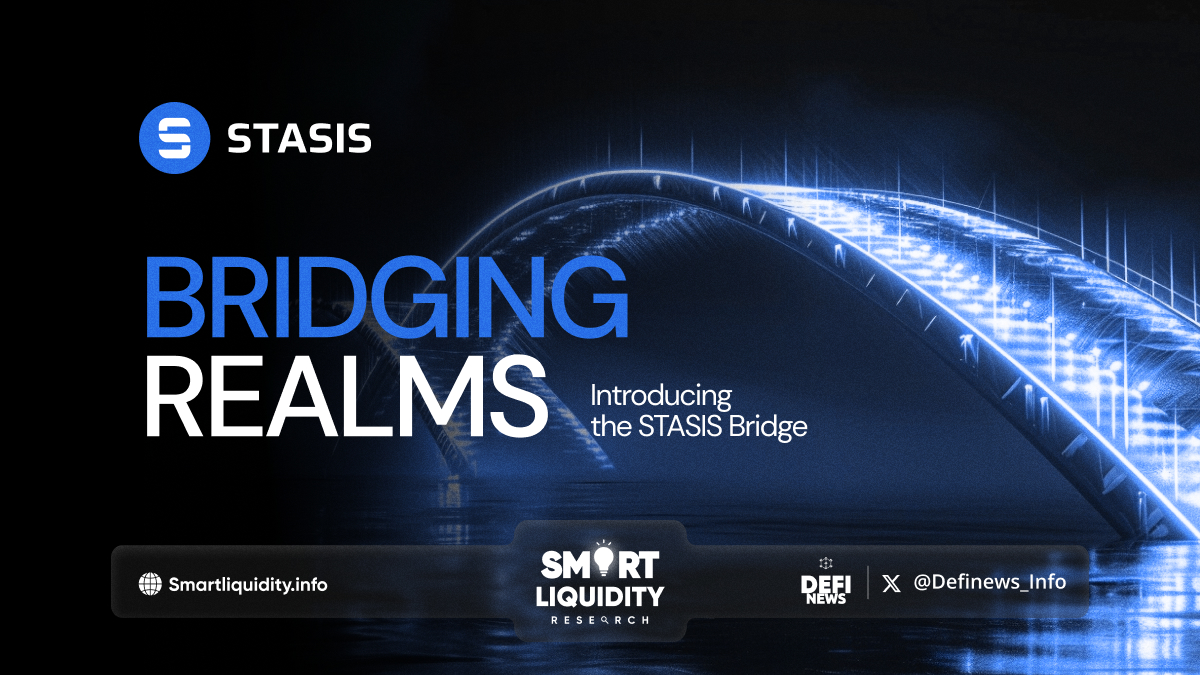Bridging Realms: Introducing Stasis Bridge


Introducing Stasis Bridge, the tools designed to facilitate seamless transactions of EURS across seven major blockchains. Since its establishment, STASIS has acted as a link connecting the world of cryptocurrency with traditional finance.
The Stasis is taking another stride forward by introducing a unique bridging feature to improve blockchain interoperability and your engagement with EURS!
The STASIS Bridge aims to revolutionize the interoperability of the leading euro stablecoin in various blockchain networks. This innovative tool enables smooth EURS transactions across seven prominent blockchains, enhancing liquidity, expanding cross-chain functionality, and creating new opportunities for users and investors globally.
Closing the Gap in Blockchain Technology
STASIS Bridge stands out as the most capital-efficient cryptocurrency bridge, offering a top-tier solution for seamless cross-chain asset transfers with zero liquidity issues. Operating on a centralized model, it provides heightened security and restricted entry for verified users. This approach guarantees a reliable user community and upholds transaction integrity throughout the network. By maintaining strict control and supervision over transactions, this design choice enhances security and trust. Access to the bridge is reserved for verified customers who meet specific usage criteria, ensuring robust authentications for all participants.
STASIS gains a distinct advantage by facilitating token transfers between various blockchains using the EURS stablecoin minting technique. The EURS value remains stable across blockchains, consistently reflecting the fiat Euro value.
EURS is a reputable fiat-backed stablecoin known for transparency and reliability due to its direct link to the Central Bank. Widely accepted in DeFi, it offers cost-effective token transfers with efficient bridge technology for near-zero fees.

The benefits of the STASIS Bridge
The STASIS Bridge improves EURS liquidity by enabling easy transfers across blockchains, enhancing attractiveness to investors. It fosters a connected crypto ecosystem, optimizes transfers, reduces fees, and ensures secure transactions for user trust.
- Seamless DeFi integration without LPs
Experience DeFi composability with EURS on leading DEXs for cost-effective transactions and easy API integration with STASIS Bridge and other dApps. - Broad Chain Compatibility
The bridge supports transactions across six blockchains using adaptable HTLCs, offering flexibility with EURS. Integration with the Web app allows users to buy or sell EURS within one platform. - Simplified and Secure Transactions
To initiate transactions via the STASIS Bridge, users’ wallets need registration and verification through Wallet Connect or the Satoshi Test for transaction security, similar to EURS purchase checks. - Low and Transparent Commissions
The bridge offers low transaction fees that align with EURS purchase costs, influenced by transaction volume. Transparent fee details are provided to ensure competitiveness and transparency, avoiding hidden charges. - Efficient and Semi-Automatic Exchange Process
The STASIS Bridge facilitates semi-automatic token exchanges within set limits for speed, accuracy, efficiency, and security, offering users a streamlined experience with enhanced safety measures. - Rock-solid tech security
STASIS Bridge aligns its security level with that of the supported blockchain, providing strong protection. - Accelerated transfers
Cross-chain swap speeds are solely determined by the transaction completion times on the respective blockchains involved, guaranteeing rapid transfers.
Stasis Bridge Functionalities
The STASIS Bridge facilitates the safe and efficient transfer of EURS tokens between blockchains by depositing EURS on the origin blockchain and issuing an equivalent amount on the target blockchain.
The bridge enhances EURS usability across platforms, fostering stablecoin adoption and potentially inspiring similar technologies for other digital currencies. It connects blockchains, improving exchangeability and utility, thus advancing unified digital currency systems.




